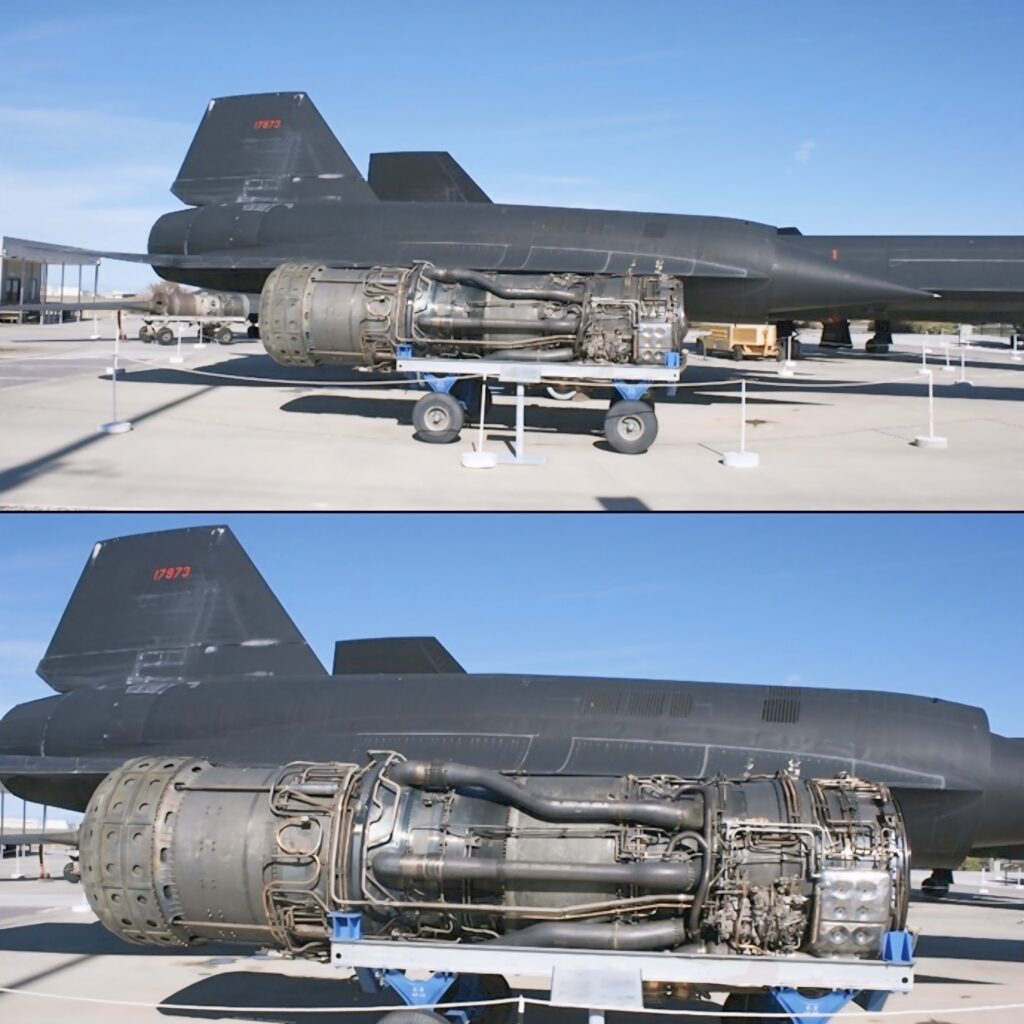
The Lockheed SR-71 Blackbird remains one of the most iconic aircraft ever built, not just for its striking appearance, but for what it represented: speed, secrecy, and technological ambition at a level the world had never seen. Developed by Lockheed’s Skunk Works division in the early 1960s, the SR-71 was designed for one purpose—high-altitude strategic reconnaissance during the Cold War. It wasn’t built to fight, carry missiles, or drop bombs. Its weapon was information, and its defense was speed.
Visually, the aircraft looks like something from science fiction. Its long, needle-like fuselage, sharply tapered chines, and swept wings gave it a profile unlike anything in the sky. Painted in a heat-absorbing matte black coating, it earned the nickname “Blackbird,” though officially it was part of the “Black” program long before the public knew it existed. The dark finish wasn’t just for intimidation. At Mach 3+, skin temperatures exceeded 600°F, and the paint helped radiate heat away from the structure.
The Blackbird still holds the record as the fastest air-breathing, manned aircraft ever flown. Cruising above 80,000 feet at over 2,000 miles per hour, it could literally outrun threats. More than 4,000 missiles were fired at SR-71s over the course of their service life, and not a single one ever hit. If radar detected a launch, the crew’s response was simple: accelerate. No fighter, no missile, and certainly no hostile aircraft could keep up.
What made this possible was a combination of radical engineering and materials science. The SR-71 was built largely from titanium—an expensive, difficult metal that could survive the heat generated by friction at extreme speeds. Even the fuel system was unconventional. The special JP-7 fuel was stable enough to act as a coolant before being burned, and the aircraft leaked fuel on the ground because the panels only sealed properly once heated in flight.
Inside the cockpit, the environment was closer to a spacecraft than a conventional jet. Pilots wore pressure suits similar to those used by astronauts. Missions lasted hours. Navigation and camera systems were among the most sophisticated of the era, allowing the Blackbird to photograph vast areas of hostile territory in a single pass.
Despite its unmatched performance, the SR-71 was eventually retired—not because it became obsolete, but because satellites and drones changed the intelligence landscape. Still, no replacement has ever matched its combination of speed, altitude, and survivability.
Today, preserved Blackbirds sit in museums, where they still seem futuristic. Even decades after its first flight, engineers and aviation enthusiasts continue to study it, and rumors persist of successors hidden in classified hangars. Whether or not a “son of Blackbird” exists, the SR-71 remains a masterpiece of aviation history—an aircraft that didn’t just push boundaries, but redefined them.


